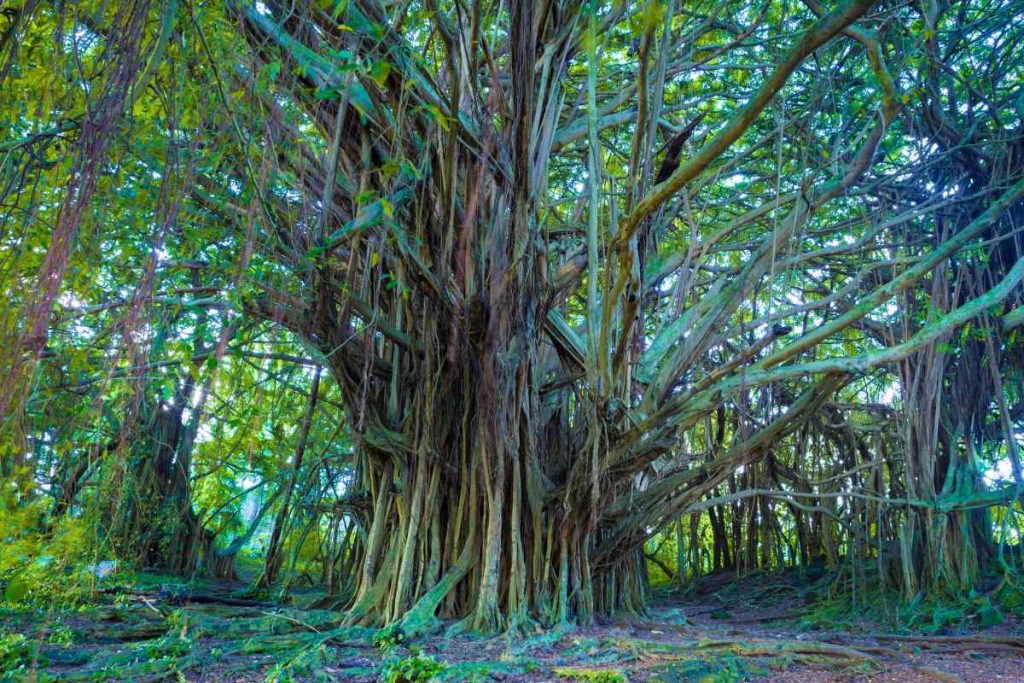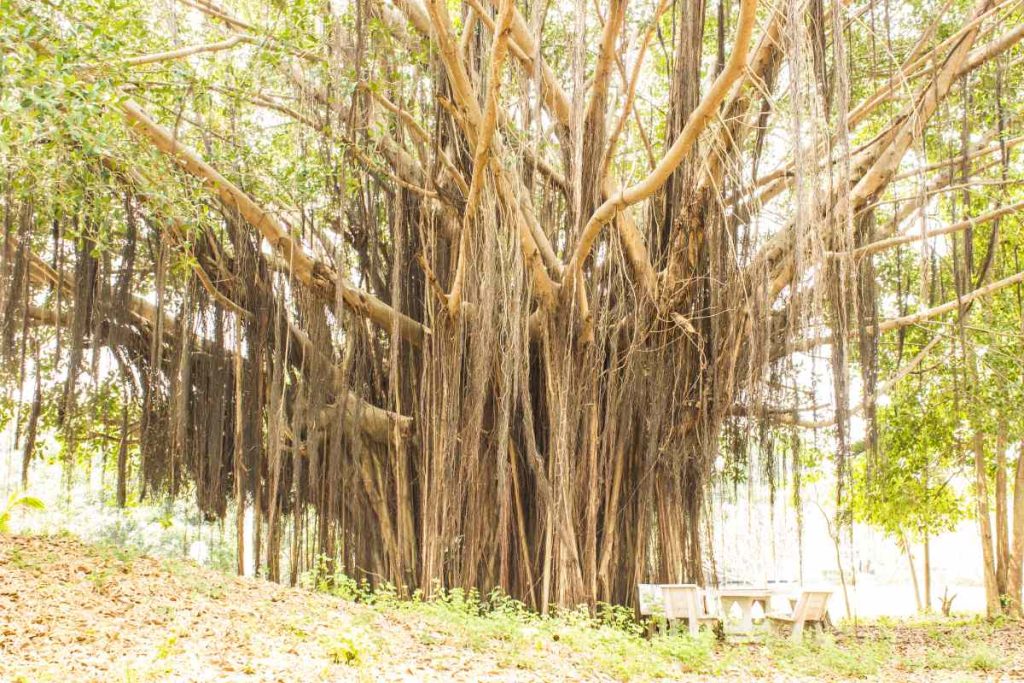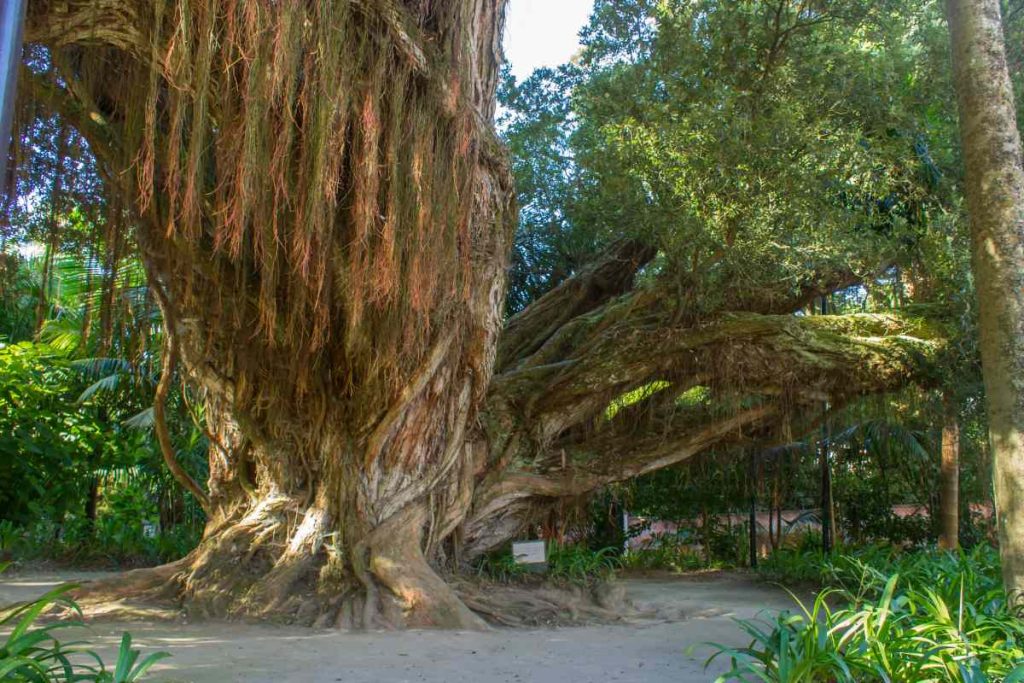The banyan tree is a majestic and iconic tree that holds great significance in various cultures around the world. With its sprawling branches and aerial roots, the banyan tree is not only a sight to behold but also plays a vital role in the ecosystem.
In this article, we will delve into the history, characteristics, cultural significance, and ecological importance of the banyan tree. We will also explore its role in Hindu mythology, its medicinal properties, and the threats it faces in today’s world. Join us on this journey as we uncover the wonders of the mighty banyan tree.
History and Origin of the Banyan Tree
The banyan tree has its origins in India, where it is considered sacred and is often associated with religious and cultural practices. The name “banyan” is derived from the Portuguese word “banian,” which means “merchant.” This is because the banyan tree was often found near marketplaces where merchants would gather to conduct their business.
From its origins in India, the banyan tree spread to other parts of the world through human migration and trade routes. It can now be found in various tropical and subtropical regions, including Southeast Asia, Africa, and the Americas. The banyan tree has become naturalized in many of these regions and has become an integral part of the local ecosystems.
The banyan tree holds great historical and cultural significance in many societies. In India, it is often associated with wisdom, longevity, and fertility. It is also considered a symbol of immortality and is believed to be the abode of gods and spirits. In Buddhist culture, the banyan tree is revered as the tree under which Buddha attained enlightenment.
Characteristics and Features of the Banyan Tree

The banyan tree is known for its unique physical characteristics. It is a large, evergreen tree that can grow up to 100 feet tall and spread its branches over a wide area. One of the most distinctive features of the banyan tree is its aerial roots, which grow downwards from the branches and take root in the ground. These roots provide additional support to the tree and help it to withstand strong winds and storms.
The banyan tree also has a large canopy that provides shade and shelter for a variety of animals and plants. The leaves of the banyan tree are broad and glossy, and its fruits are small and fig-like. The tree produces a milky sap that is used in traditional medicine for its healing properties.
The banyan tree has adapted to its environment in various ways. Its aerial roots not only provide support but also help the tree to absorb moisture from the air. The large canopy of the banyan tree helps to regulate temperature and humidity, creating a microclimate that is beneficial for other plants and animals.
The Significance of the Banyan Tree in Different Cultures
The banyan tree holds great significance in Hindu, Buddhist, and other cultures around the world. In Hindu culture, the banyan tree is considered sacred and is often associated with Lord Shiva. It is believed that Lord Shiva meditated under a banyan tree, and therefore, it is considered auspicious to worship the tree.
In Buddhist culture, the banyan tree is revered as the Bodhi tree, under which Buddha attained enlightenment. It is believed that the original Bodhi tree was a banyan tree, and therefore, banyan trees are often planted near Buddhist temples and monasteries.
The banyan tree is also associated with various cultural practices and traditions. In India, people tie threads around the trunk of a banyan tree to seek blessings and good fortune. In some cultures, banyan trees are considered a symbol of fertility and are worshipped by couples who are trying to conceive.
The Banyan Tree’s Role in the Ecosystem

The banyan tree plays a crucial role in the ecosystem. Its large canopy provides shade and shelter for a variety of animals, including birds, insects, and small mammals. The aerial roots of the banyan tree also provide a habitat for epiphytic plants, such as orchids and ferns.
The banyan tree is also an important source of food for many animals. Its fruits are eaten by birds and small mammals, and its leaves are consumed by herbivorous animals. The tree also attracts pollinators, such as bees and butterflies, with its fragrant flowers.
The banyan tree has a symbiotic relationship with various species. It provides a home for epiphytic plants and offers protection to animals. In return, these plants and animals help to pollinate the tree and disperse its seeds, ensuring its survival and propagation.
The World’s Largest Banyan Trees and their Locations
The banyan tree is known for its massive size, and some of the largest banyan trees in the world are truly awe-inspiring. One such tree is the Great Banyan Tree in India, which is located in the Acharya Jagadish Chandra Bose Indian Botanic Garden in Kolkata. This tree is estimated to be over 250 years old and covers an area of about 14,500 square meters. It has over 3,000 aerial roots and is considered the largest banyan tree in the world.
Another notable banyan tree is the Kabirvad Tree in Gujarat, India. This tree is believed to be over 300 years old and covers an area of about 17,520 square meters. It is considered sacred by the local people and is a popular tourist attraction.
The Banyan Tree’s Role in Hindu Mythology
In Hindu mythology, the banyan tree holds great significance and is associated with various gods and goddesses. It is believed that Lord Krishna revealed his divine form to Arjuna under a banyan tree, as described in the Bhagavad Gita. The tree is also associated with Lord Vishnu and is considered his abode.
The banyan tree is often depicted in Hindu religious art and is worshipped during festivals and religious ceremonies. It is believed that worshipping the banyan tree can bring blessings, prosperity, and spiritual enlightenment.
The Banyan Tree’s Medicinal Properties and Uses

The banyan tree has been used in traditional medicine for centuries due to its various medicinal properties. The milky sap of the tree is believed to have anti-inflammatory, antimicrobial, and analgesic properties. It is used to treat various ailments, including skin diseases, digestive disorders, and respiratory problems.
The bark of the banyan tree is also used in traditional medicine. It is believed to have astringent and antiseptic properties and is used to treat wounds, ulcers, and other skin conditions. The leaves of the banyan tree are used to make herbal teas and infusions that are believed to have detoxifying and rejuvenating effects.
Modern research has also shown that the banyan tree contains compounds that have potential therapeutic benefits. For example, studies have found that the bark of the banyan tree contains antioxidants that can help to protect against oxidative stress and inflammation.
Threats to the Banyan Tree and Conservation Efforts
Despite its cultural significance and ecological importance, the banyan tree faces various threats in today’s world. Deforestation, urbanization, and agricultural expansion are some of the major threats to the banyan tree. Many banyan trees have been cut down to make way for roads, buildings, and agricultural land.
To protect the banyan tree, conservation efforts are being undertaken by various organizations and individuals. These efforts include creating protected areas, raising awareness about the importance of the banyan tree, and promoting sustainable land use practices. It is crucial to preserve the banyan tree for future generations to enjoy its beauty and reap its ecological and cultural benefits.
Exploring the Beauty and Majesty of the Mighty Banyan Tree
The banyan tree is truly a marvel of nature, with its sprawling branches, aerial roots, and majestic presence. Exploring a banyan tree can be a magical experience, as you witness the intricate network of roots and the vibrant ecosystem that thrives within its canopy.
When visiting a banyan tree, take the time to appreciate its beauty and reflect on its significance. Observe the various animals and plants that call the tree home, and marvel at the adaptations that allow the tree to thrive in its environment. Take photographs, sketch, or simply sit in silence and soak in the tranquility of the surroundings.
In conclusion, the banyan tree is not just a tree; it is a symbol of wisdom, longevity, and spiritual enlightenment. It is a living testament to the wonders of nature and the interconnectedness of all living beings. Let us cherish and protect the mighty banyan tree for generations to come.
More Sources: The Ancient Alerce Tree: Witness to Centuries of History

1 Comment
Pingback: Discovering the Oldest Araucaria Bidwillii Trees - TopInfoSearch